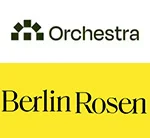 |
| Jacob Streiter |
“How do you measure ROI?” said just about every client ever. And until recently, there wasn’t ever a great answer.
But now, thanks to a brand new, special formula concocted by myself and my colleagues at Rosen Group, there exists a single, comprehensive algorithm—which seamlessly and precisely calculates a PR campaign’s audience reach, SEO value, directed web traffic, social media metrics, generated sales and new business leads—that can be simply and effectively communicated by all PR professionals to the satisfaction of their clients and all relevant stakeholders.
OK, just kidding. That magic formula doesn’t exist, and due to the nature of PR, it probably never will. And while convenient, state-of-the-art ROI formulas and tools do exist—and they do certainly come in handy when used appropriately—all the fanciest algorithms in the world will still fall short of satisfying anyone’s needs if client-agency expectations and areas of focus are misaligned to begin with.
As an agency VP who has spent nearly a decade working with clients spanning the fields of finance, technology and publishing, I’ve seen the age-old ROI riddle and answer play out in all sorts of different ways. And while it’s normal, during those conversations about the results of our work, to experience a range of inner feelings—from pride and gratification to frustration and humility—there is certainly one aspect of those meetings, and PR agency life more broadly, that remains constant: it’s ultimately up to each of us, as PR professionals, to take ownership of figuring out how to best and most effectively address that classic client question.
With all of that in mind, here are a few tips, each addressing ROI-related matters:
• Manage expectations from the start. What is a realistic placement for your client? What isn’t? Being both ambitious and bullish is part of the formula to a successful campaign, but so is being both honest and reasonable. It might be tempting and, in the short term, convenient to promise Joe Rogan, the New York Times or CNN, but there are no guarantees in PR, and false promises to your client will ultimately set up your campaign and relationship for failure.
• Put yourself in your clients’ shoes, and work from there. This is an area where empathy can be (or grow into being) your superpower. Based on what you know about your client, what can you reasonably infer about their goals and expectations? Don’t assume that your initial answers are all correct—but do put some thought into this question early on, and use your initial answers as a starting point for a guiding framework that, over time, can be revised, fleshed out and solidified.
• Straight up ask: What single ROI metric is most important? Just like how, according to relationship expert Gary Chapman, everyone has a primary love language, I would argue that every client has a primary ROI metric. Identify that metric and do what is necessary to focus on it.
Further, based on the insights and perspective gained from many client immersion sessions, brainstorms and strategy meetings over the years, here are a few relevant tips I can offer to companies, particularly those looking to get better aligned with their PR partner and ultimately maximize results:
• Straight up say: This is our most important ROI metric. As any shrink will tell you: open, direct communication is key to a healthy relationship, and so is taking the time first to get to know yourself, including your own wants and your own needs. Of course, I’m still talking about your relationship with your... PR partner. Do all of your internal ducks have to be perfectly aligned from the get-go? No, of course not. But there are certain things—such as executive buy-in, sharing of relevant internal context and the communication of which ROI metric is most important—that, time and time again in my experience, have proven to be factors that set up a campaign for success.
• Measure progress over the medium- to long-term, rather than day-to-day or week-to-week. As any historian will tell you (or, actually, as anyone will tell you): Rome wasn’t built in a day. Yes, that analogy is trite and cliche—but also yes, it is relevant and applicable. More often than not, consistent, impactful results are yielded from a combination of experimenting with different tactics, being persistent and planting seeds that pay off later on. The appropriate timeframe to observe and measure the success of your PR partnership: not in hours, days or weeks, but in months, quarters or years.
• Be mindful of the impact of peripheral projects: Here’s a secret (or maybe not-so-secret) I’m going to let you in on: Your PR partner wants to make you happy. So when you assign them a given task, there’s a high likelihood they’re going to make every effort to go above and beyond your wildest dreams—and do so ASAP. But, whatever that task is, it’s not worth the cost if it’s going to derail the most essential elements of your campaign. So I would just advise keeping in mind that, when assigning a necessary peripheral task or project, being communicative about scope, expectations and especially timeline goes a long way toward keeping your aim focused on the bullseye.
While the definition of—and formula to—success will vary from client to client and campaign to campaign, the principles that lay a strong foundation between client and agency are fairly universal. Most fundamentally, those principles are: alignment on what needs to be prioritized (and what doesn’t); cultivating a structure and workflow that enables deliberate, focused effort towards the end goal in mind; and an open dialogue throughout the partnership.
In other words: I can confidently say that the perfect, universal ROI formula positively, categorically does not exist. However, here's what does exist: a pathway, based on guiding principles and best practices, that makes way for a strong client-agency partnership. Follow that pathway and, whether you are the client or agency, you will be well on your way to achieving impactful results.
***
Jacob Streiter is vice president at Rosen Group, a full-service public relations firm headquartered in New York City. Prior to joining Rosen Group, he led marketing and communications at a Detroit-based startup.


 BerlinRosen Holdings has rebranded as Orchestra, a holding company of eight agencies with more than 600 staffers in 12 offices in the US.
BerlinRosen Holdings has rebranded as Orchestra, a holding company of eight agencies with more than 600 staffers in 12 offices in the US. "It’s usually not the best product or service that wins, it’s the offer that’s easiest to say yes to," Steve August said during O’Dwyer’s webinar Mar. 19 on growing your business without losing your sanity moderated by Researchscape’s Tony Cheevers.
"It’s usually not the best product or service that wins, it’s the offer that’s easiest to say yes to," Steve August said during O’Dwyer’s webinar Mar. 19 on growing your business without losing your sanity moderated by Researchscape’s Tony Cheevers. In response to a new 4A’s guidance on 30-day payment terms, I make the case for fair business practices that create a level playing field and a fair future for all agencies.
In response to a new 4A’s guidance on 30-day payment terms, I make the case for fair business practices that create a level playing field and a fair future for all agencies. Stop thinking about client service as just a service. Client service is a partnership to deliver on a mutual set of objectives.
Stop thinking about client service as just a service. Client service is a partnership to deliver on a mutual set of objectives. Writing and defending a properly written scope of work is a huge deal.
Writing and defending a properly written scope of work is a huge deal.


 Have a comment? Send it to
Have a comment? Send it to 
No comments have been submitted for this story yet.